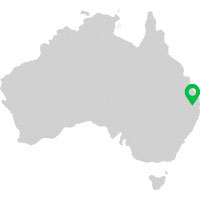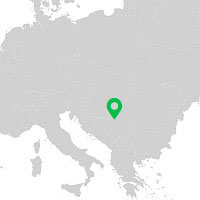

With the advancement of technology, digital marketing has taken the world by storm. Now more than ever, it’s easier to reach your target audience and develop your business further. No matter how simple some people perceive digital marketing is, it can actually be qualified as a science of its own.
Most rising business owners aren’t even fully aware of what this term entails. This becomes even more evident as time progresses and new trends are developed. Hence, it’s important to divide digital marketing into its main components and show business owners everywhere exactly what they’re dealing with.


Search Engine Optimisation, or more commonly known as SEO, is the cornerstone of digital marketing. Google aims to show the most relevant results on a given topic and sites with the best-optimised websites always show up in the top searches. SEO focuses on the increase of organic traffic i.e. the non-paid search engine results.
Furthermore, SEO is a unique mixture of technical and creative approaches. To truly develop your business and make your site better for your users, you’ll have to master both of these approaches. This is why a whole team of people is usually responsible for optimising a website.
This part of SEO implies optimising your website in terms of content and HTML code. On-site SEO goes beyond helping search engines properly identify your content. It also lets your customers know what the website is about and if it’s truly relevant to what they were searching for.
On a deeper level, this helps search engines understand what a human would see and want, thus flagging your site as high-quality. On-site SEO used to be centred around getting the right keywords in your texts, but that’s no longer the case. Today, this method has been surpassed as search engines evolved. They’re now able to recognize the quality of the content from the context in the text.
Another part of the On-site SEO is technical SEO. It’s as important for search engines to be able to read your site and categorize it properly as it is for humans. This is where technical SEO comes into play. If done correctly, the organic rankings boost dramatically and search engines index your site more effectively.
Some goals for technical SEO are using SSL (Secure Sockets Layer) and having a mobile-friendly website. It also entails improving site speed and fixing duplicate content issues. All of this contributes to better user experience, thus making your site more likeable, trustworthy, and most importantly, visited.
On the other hand, off-site SEO deals with optimisation actions outside your website which also serve the purpose of boosting your rankings. Simply put, this segment of SEO helps your site gain relevance, popularity, authority, and trustworthiness.
This is achieved by promoting and linking your website on various pages and sites, and thus vouching for the quality of your content. Regardless of the current or future trends of off-site SEO, the point of relevance and trustworthiness still remains the same.
Backlinks are the most important part here, as they are used by search engines as indications towards high-quality content.


Even though it may seem no one uses Facebook anymore, it’s actually the most widely used social network. Not only that, but it has shaped social interactions and set the foundation for other networks. People use Facebook for business pages, events, groups, and instant messaging, so it’s easy to find your place in the matter. With Facebook, it’s all about content.
Everything you write should be user-focused, but make sure to post in moderation, otherwise, customers will find you annoying instead of interesting. Don’t shy away from engaging with your audience by replying to comments and messages, either, as people will appreciate you taking the time to actually listen.
Instagram is great for reaching younger audiences and connecting with your customers through images. Due to the human psyche, images seem to have more of an effect than just pure blocks of text. This is why you should try to stay relevant and interesting on Instagram, while still subtly promoting your product.
It’s all about building a brand name here, make use of popular hashtags to reach an even wider audience. As with Facebook, it’s important to post in moderation as it is to engage in conversation with those who comment or ask questions.
If you’re looking for a more professional approach, it’s time to open a LinkedIn account. This platform will help you stay connected to those who seek to know more about business. This gives you the opportunity to share your knowledge with your audience and give them a glimpse into the interworking of your product.
Sharing business knowledge connected to your firm will help you build authority and trustworthiness. If you remember from the beginning of the text, these components are invaluable for boosting traffic. It’s important to always keep your page up to date, and solicit recommendations for your products. Also, remember to make use of the products and services spotlight.
Billions of people visit YouTube, and the numbers just keep increasing since the start of the smartphone era. Sharing is the essence of marketing on YouTube. The more interactions your video has the more your ranks increase. This might be a good opportunity to see what kind of engagement you’ll get with your audience.
As far as content is concerned, it’s a good idea to make how-to videos and tutorials which explain more about your product or service.


Formerly known as Google AdWords, this online advertising platform can be used to reach users through two main networks (the Search network and the Display Network). The difference between these two networks is that the Display Network allows you to place visual banner-style advertisements, thus reaching 90% of an audience. This type of marketing is called PPC, or Pay Per Click.
While PPC is a much broader concept than Google Ads alone, the fact is that Google’s platform is the most popular one. There are also Bing Ads, Yahoo Ads, Oath and several others.
It’s important to stress that PPC refers to bidding on keywords for a chance to display them to users who use those keywords in their search query. This is the other counterpart to organic search-paid search. To use Google Ads effectively, you have to have a plan in place. It’s not wise or productive to immediately bid on relevant keywords.
First, you’ll need to establish goals. Figure out what you want to use the Ads for. Is it brand building, E-commerce, lead generation, or something else? Then, determine your target audience. It’s advised to put yourself in their shoes: what do they do, where do they do it, what devices they use and when do they search? Once you’ve got that figured out, it’s time to get to the keywords.
Bidding on those relevant for your business will allow your ads to appear in Google search results and on Google partner websites. As well as bringing in more business, keywords can also help you discover what your competition is up to, the costs on the market and the volume for search terms in every stage of sales.
Choosing a bidding strategy is one of the most important aspects of running an Ads account. Without tight spending control, it is easy to blow the entire budget out of the water in a matter of hours.
The essence of PPC is relevance, which is why you should have a structured account. It should be made out of campaigns, and each campaign should be made out of a close-knit group with set goals. This way, each group can focus on different keywords to create hyper-relevant ads.
Finally, don’t forget to devote some time to the ad content. Interesting headlines, calls to action, and the keywords you’re bidding are all essential components for writing a killer ad. It goes without saying that you should test everything and have day-to-day optimisations to maximize your effectiveness.


Many other marketing aspects like SEO and social media marketing are only around because of content. After all, there would be nothing to optimise and promote without content. Examples of content include blog posts, infographics, videos, podcasts, social media posts, and product descriptions.
In other words, content is anything that sends the right message to the audience. Communication is key in any social interaction, and marketing is no exception, which is why content is considered to be the heart of marketing.
Creating content gives your customers something to talk about and, in turn, raises brand awareness. It also helps you build trust and authority, which puts you ahead in business as we’ve already discussed. On a technical level, the content has the power to increase your site traffic as well as to improve your SEO and bump customer conversions.
Content marketing in itself focuses mostly on the tactics and execution, meaning the creation, curation, and editing of content which was specifically created for marketing purposes. This is aimed towards making a stronger connection between the company and the customers i.e. the products and the market which needs them.
Simply put, content marketing is about creating content which will help people through the sales funnel instead of just being something they want to consume.
This term and the term content strategy are often used interchangeably, but there is a difference. Content strategy refers to the vision and interworking of your content. In other words, it concerns itself with the practical questions of “how” and “why” the content will be created, updated, and managed.
Still, there are overlapping areas between the two terms as they basically go hand-in-hand. Both entail developing your voice and style, the audience reach, as well as setting goals and the overall vision.
The first thing your company needs as far as content creation is concerned is an editorial calendar. Organization and creativity complement each other, which is proven by editorials. This allows you to stay on track with content creation and content marketing, as you and your team will plainly know whose responsibility is to do what, leaving no room for error.
Aside from this, it’s important to have someone vet your content and check the quality. What we’re talking about here is content governance. The workflow of your team should also be organized and the responsibility should fall to the same person. Finally, don’t forget to find quality authors for your content as there’s no use starting anything without a skilled and confident hand.
As we can see, digital marketing entails a lot of different things. It’s important to devote attention to site creation and fill it with high-quality content. This way you build trust with your clients and become more relevant in your business. Of course, all of this takes a lot of work which is why most small and mid-size businesses opt to turn to a professional company which takes care of digital marketing for them. Green Web Marketing is one such professional company, equipped with various experts which will make you become your customers’ first choice, not the alternative.


How to Develop a Unique Digital Marketing Strategy for E-Commerce


How to Generate Traffic from Facebook Page








Dunavska 13
21000 Novi Sad, Serbia